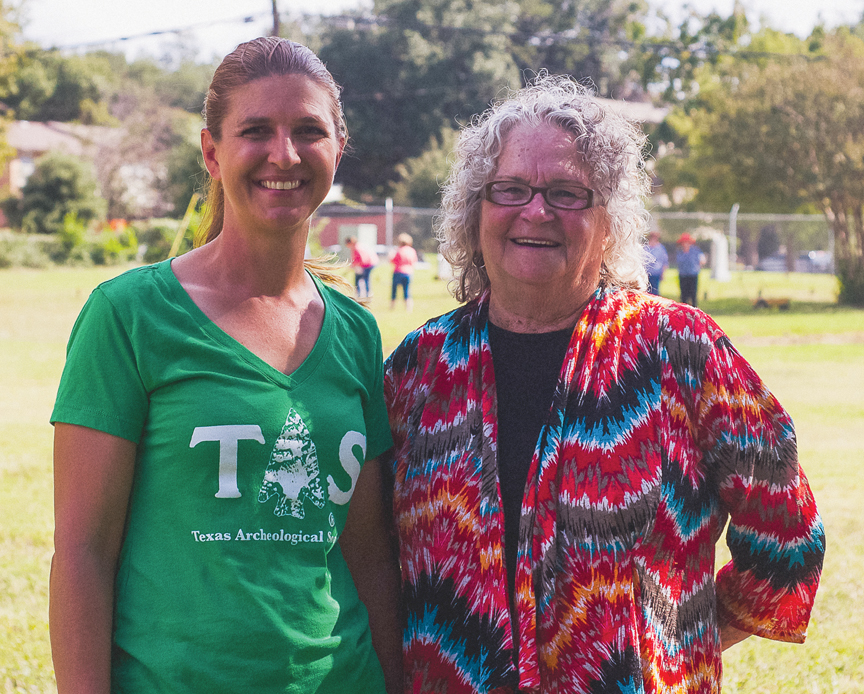
About a dozen volunteers recently met at an historic Arlington cemetery, determined that the graveyard, and its markers, would be properly cleaned, identified, and cared for. Some were armed with spray bottles, others wore straw hats, and one maneuvered dousing rods.
Arlington Historical Society Director Geraldine Mills says nearly 80 graves have been identified at Johnson Cemetery, also known as Mill Branch or Mill Creek cemetery, where some of the region’s early African American graves are located.
Many of the volunteers represented the local Lucretia Council Cochran Chapter of the Daughters of the American Revolution, who were performing service work for a sought-after grant to repair and restore all the headstones in the graveyard, which is located on Arkansas Lane just east of Matlock Road.
“In this small, historic, family cemetery lie the remains of one of the principal figures in the history of Arlington and Tarrant County, together with those of his family, his slaves and their family members,” reads the City of Arlington’s website. “Colonel Middleton Tate Johnson was a member of the Congress of the Texas Republic, namesake of Johnson County, and known as the ‘Father of Tarrant County.’ He arrived in this area in 1846, as commander of a company of Texas Rangers.”

Dr. Catrina Whitley, with the Tarrant County Archeological Society, has been working in the area with ground- penetrating radar. She says that while the technology can’t completely identify a grave, it can reveal when something is underground. Five suspected graves were located in a northwest section of the property using the radar.
Dr. Whitley points to a pile of sandstone rocks, including one in the shape of an obelisk. She says she believes some of the markers may have been moved around by people not realizing they were tombstones. She also wonders if the road that once ran though the property was a dividing line with the Johnson family together “and everybody else that are poor, regular folk” elsewhere.
Graveyard plots sold in the early 1900s seemed to be concentrated on the property’s outer edges, Whitley says. In addition, GPR shows an unexplained, larger-than- what-a- single-grave- would-be area of what could possibly be ground disturbance near a tree.
The Arlington Historical Society has been trying to get a wrought iron fence put up around the property, Mills says, but funding for the project has not been forthcoming. “Each [fence] section will cost $300,” she notes. “And we need 147 sections to fix the entire cemetery.”
Mills’ reasoning for the fundraising effort is this: Asking for individual sponsors of $300 per fence section would give residents “a sense of ownership,” plus it would be easier than asking for $50,000 for the entire project.
Mills and Dr. Whitley say they were motivated to care for the cemetery partly because of Eulyssee Pointer, whose family members – including his mother, father, brother and first wife – were buried there. Pointer, who is now deceased, “raised cane,” Mills says, when at one point the cemetery gate had been locked and he could not get inside to visit the graves of his relatives.
“He was about the only one who was fighting for [the cemetery,]” she says.
Mills says she feels Pointer’s need to take care of cemetery, “and make it known that there were important people buried out there not only important to him but important to the town.”
Mills says that includes Arlington residents who had “started businesses in The Hill, raised kids, cooked in people’s houses, and did all the labor that was done.” She is hopeful that people will realize the important, historical element that the small, historic graveyard adds to the city: “Cemeteries, they tell stories.”
















